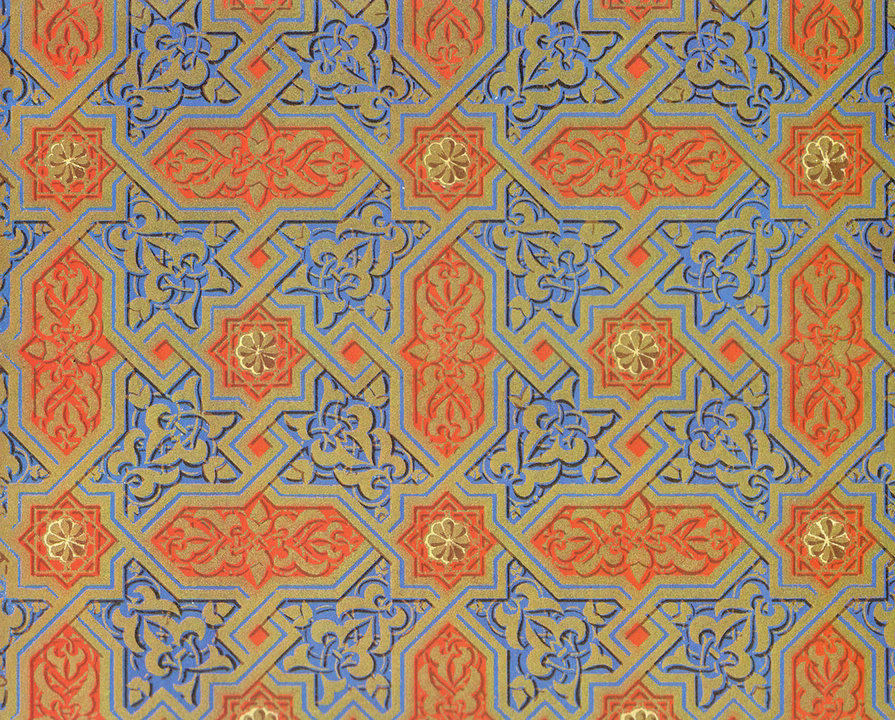Interlacing patterns are patterns of lines and shapes that have traditionally dominated Islamic art. They can be broadly divided into the arabesque, using curving plant-based elements, and the girih, using mostly geometrical forms with straight lines or regular curves. Both of these forms of Islamic art developed from the rich interlacing patterns of the Byzantine Empire and from Coptic art.
Overview
Eva Baer, in her book Islamic Ornament (1998), describes the art:
….the intricate interlacings common in later medieval Islamic art, are already prefigured in Umayyad architecture revetments: in floor mosaics, window grilles, stone and stucco carvings and wall paintings(Khirbat al-Mafjar, Qusayr’Amra, Qasr al-Hayr al-Gharbi etc.), and in the decoration of a whole group of early east Iranian, eighth- to tenth-century metal objects.
One of the first Western studies of the subject was E. H. Hankin’s “The Drawing of Geometric Patterns in Saracenic Art”, published in Memoirs of the Archaeological Society of India in 1925. In this essay, Hankin takes the view that the artists who created these designs used a method based on the use of the compass and the straight edge. This view is supported by the majority of contemporary authorities on the subject, such as Keith Critchlow in his book, Islamic Patterns: An Analytical and Cosmological Approach. This explains how ornamented objects as varied in size as a book or a mosque, were treated by artists using the same geometric methods adapted to the size and nature of the object being ornamented.
On the other hand, Owen Jones describes a method whereby interlace ornament is designed on a foundation of geometric grids, with the same grids re-drawn to the size of the object. In his catalog for the Crystal Palace exhibition, Jones wrote about the decorative art found in the Alhambra, where much of the decoration consists of interwoven designs, that:
The grace and refinement of Greek ornament is here surpassed. Possessing, equally with the Greeks, an appreciation of pure form, the Moors exceeded them in variety and imagination.
Arabesque
The Islamic arabesque is a form of artistic decoration consisting of “surface decorations based on rhythmic linear patterns of scrolling and interlacing foliage, tendrils” or plain lines, often combined with other elements. It usually consists of a single design which can be ’tiled’ or seamlessly repeated as many times as desired.
Girih
Girih (Persian: گره, “knot”), also girih sāzī (گره سازی, “knot making”) or girih chīnī (گره چینی), is an Islamic decorative art form used in architecture and handicrafts (book covers, tapestry, small metal objects), consisting of geometric lines that form an interlaced strapwork. In Iranian architecture, gereh sazi patterns were seen in banna’i brickwork, stucco, and mosaic faience work. Girih has been defined as “geometric (often star-and-polygon) designs composed upon or generated from arrays of points from which construction lines radiate and at which they intersect.
Source From Wikipedia
